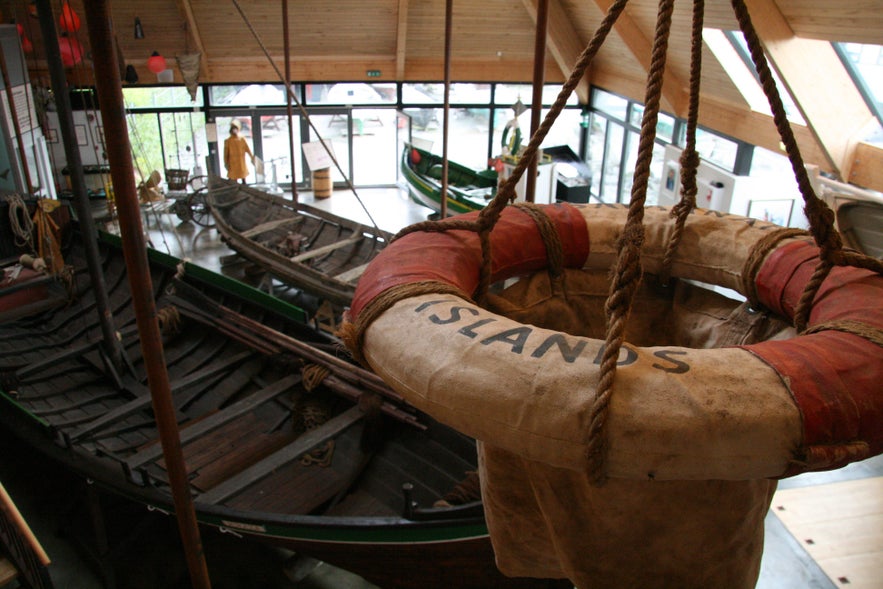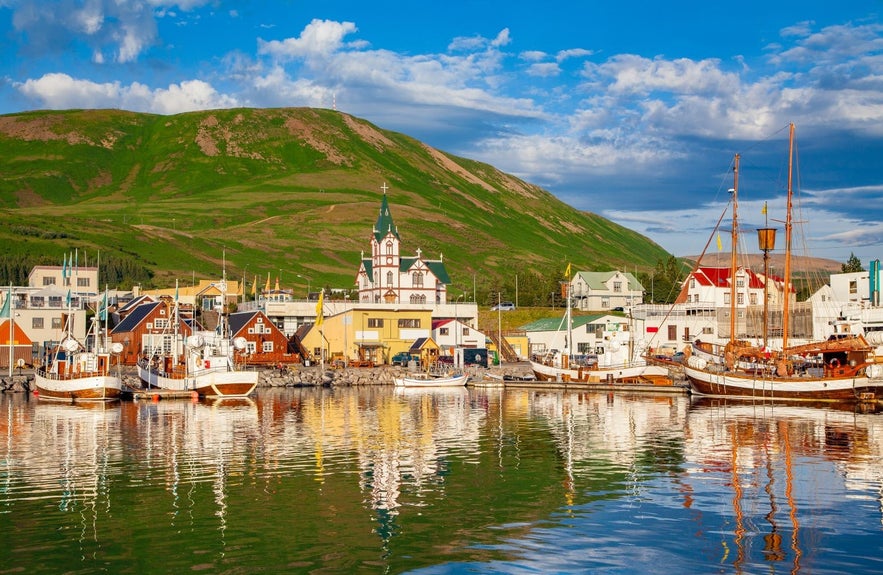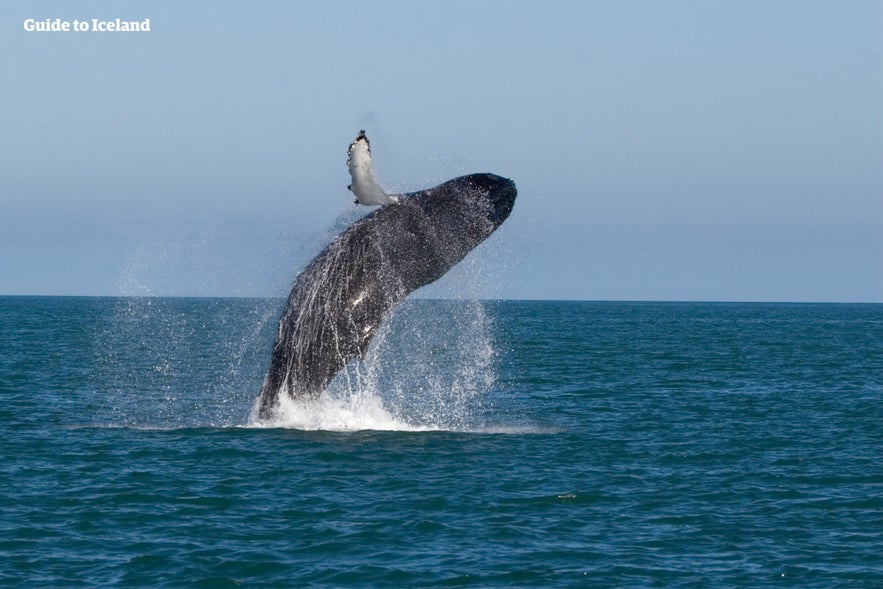
The museum serves as a central hub for preserving, documenting, and showcasing the history, culture, and heritage of Husavik and surrounding settlements in the region. Its purpose is to provide visitors insight into various aspects of local life through artifacts, photographs, and informative displays.
Travelers exploring Northeast Iceland and Husavik can easily make a stop at the Husavik Museum because it sits near the town center. You can add the museum as an extra destination on this 10-day Ring Road tour and this ultimate 19-day self-drive tour in Iceland with flexible itineraries.
Why You Can Trust Our Content
Guide to Iceland is the most trusted travel platform in Iceland, helping millions of visitors each year. All our content is written and reviewed by local experts who are deeply familiar with Iceland. You can count on us for accurate, up-to-date, and trustworthy travel advice.
Additionally, there are excellent accommodations in Husavik to choose from for travelers planning to stay longer in the area.
Photo above from Flickr, Creative Commons, by VisitHusavik. No edits made.
Permanent Exhibitions of the Husavik Museum
The Husavik Museum has two permanent exhibitions that travelers can visit throughout the year. Both exhibits offer an immersive learning experience about Husavik and Northeast Iceland’s history and cultural heritage.
Humans and Nature
Its first permanent exhibition, located on the middle floor of the museum building, is called "Human Life and Nature - 100 Years in Thingeyjar Counties" or “Mannlíf og náttúra - 100 ár í Þingeyjarsýslum”. It centers on natural objects and man-made artifacts, underscoring the connection between humanity and the natural world, particularly from 1850 to 1950.
The exhibition is divided into several thematic sections, including the stone kingdom, the animal kingdom and plant kingdom, and the narratives of locals. Each section offers a unique perspective on the relationship between humans and nature.
For example, the artifacts highlight how Icelanders interacted with and relied upon the land, animals, and vegetation for sustenance, shelter, and cultural expression.
Some objects to see in the exhibition include sculptures of animals, shell fossils, traditional clothes, and old farming tools.
Maritime Museum

Photo from Flickr, Creative Commons, by Orly Orlyson. No edits made.
The other permanent exhibition of the Husavik Museum is the Maritime Museum. It focuses on the maritime heritage and seafaring traditions of Husavik and the region east of the Eyjafjordur fjord.
The exhibition also highlights the lives of fishermen and their families, the evolution of fishing techniques and technology, and the impact of fishing on the local economy and culture.
Inside the museum, guests will see a significant number of boat displays with different sizes and purposes. The biggest one is called Hrafninn, which was gifted by Norway to Husavik in 1974.
Other artifacts of interest here are different types of fishing gear, tools for seal and shark hunting, and material for boat-building.
Other Exhibitions at Safnahusid a Husavik
Besides its two main exhibitions and a local library, the Husavik Museum’s building hosts other regional museums and exhibitions as part of the District Cultural Center.
The Thingeyinga Art Museum (Myndlistarsafn Þingeyinga) has a wide collection of artworks by local and regional artists, spanning various mediums and styles like paintings and sculptures. Some artists featured here include Valtý Pétursson, Arngrímur Gíslason, Ragna Hermannsdóttir, and Johann Björnsson.
In the same area are the Thingeyinga Photography Museum (Ljósmyndasafn Þingeyinga) and the Thingeyinga Regional Archives (Héraðsskjalasafn Þingeyinga).
At the photography museum, visitors can see as many as 180,000 photographs from 1870 to the present times. The collection has portrait and landscape images of persons, events, nature, and more from professional and amateur photographers.
The archives museum preserves different types of documents from diverse parties in Husavik and the Northeast region of Iceland. Although not all documents are accessible, reading facilities are available for public guests.
In addition to these museums, there are spaces in the building for cultural events and temporary exhibitions. These activities can further enrich the visitor experience while providing community engagement and outreach opportunities.
How to Travel to the Husavik Museum
 Travelers can reach the Husavik Museum from Reykjavik by driving, which offers flexibility and the opportunity to enjoy the scenic journey along Iceland's Ring Road (Route 1). The drive from Reykjavik to Husavik takes approximately six hours, depending on weather and road conditions. It can take longer if you make extra stops along the way.
Travelers can reach the Husavik Museum from Reykjavik by driving, which offers flexibility and the opportunity to enjoy the scenic journey along Iceland's Ring Road (Route 1). The drive from Reykjavik to Husavik takes approximately six hours, depending on weather and road conditions. It can take longer if you make extra stops along the way.
Travelers can follow Route 1 northeast from Reykjavik, passing through picturesque towns, volcanic landscapes, and coastal sceneries. The drive will cover approximately 288 miles (464 kilometers).
After passing through Akureyri in North Iceland, a detour to Route 85 (Nordausturvegur) directly leads to Husavik. Upon reaching Husavik, travelers can easily navigate to the museum, which is centrally located within the town along Storagard 17.
For those preferring public transportation, Straeto buses offer regular service between Reykjavik and Husavik. The journey typically takes longer than driving, with travel times ranging from 8 to 10 hours, depending on the route and schedule. Buses depart from Reykjavik's main bus terminal, Mjodd, and arrive at Akureyri before the short transfer to Husavik.
Another option for reaching Husavik is by air travel, with flights available from Reykjavik Domestic Airport to Akureyri Airport or Husavik Airport. It’s the fastest yet priciest option, taking only about an hour. Upon arrival, travelers can arrange transportation from the airport to the museum by rental car, taxi, or shuttle service.
Why Visit the Husavik Museum?
The Husavik Museum holds a special place among cultural institutions in Iceland. It’s a central hub for preserving and showcasing the cultural treasures of Thingeyjar counties in Northeast Iceland. This interconnected system of cultural institutions enhances the visitor experience by offering a comprehensive overview of the region's artistic, historical, and archival resources.
By visiting the Husavik Museum, travelers can access not only its two permanent exhibitions but also a few other regional museums. Guests of all ages can explore collections of artifacts, artworks, photographs, documents, and life-sized boats.
Additionally, the museum's central location within Husavik makes it easily accessible for tourists exploring the town's attractions, shops, and restaurants, providing a convenient and enriching destination for cultural exploration and discovery.
Best Attractions to Visit Near the Husavik Museum in Northeast Iceland
In Northeast Iceland, near the Husavik Museum, visitors can visit several exciting and unique attractions.
The Husavik Whale Museum offers a fascinating glimpse into the world of whales, with exhibits on various whale species, their habitats, and conservation efforts. Inside the cultural attraction, visitors can gain educational opportunities through skeleton displays of a blue whale, sperm whale, minke whale, bottle-nosed dolphin, and more.
 Alternatively, if you want to see actual whales in their natural habitat, Husavik is the place to be, as it’s often called the whale watching capital of Europe. In the fertile waters of Skjalfandi bay, nature lovers can embark on guided whale watching tours led by knowledgeable guides to see humpback whales and more aquatic animals up close.
Alternatively, if you want to see actual whales in their natural habitat, Husavik is the place to be, as it’s often called the whale watching capital of Europe. In the fertile waters of Skjalfandi bay, nature lovers can embark on guided whale watching tours led by knowledgeable guides to see humpback whales and more aquatic animals up close.
Finally, the Diamond Circle sightseeing route offers a scenic journey through Northeast Iceland's natural wonders. Besides Husavik, the Diamond Circle highlights iconic destinations such as the Dettifoss waterfall, Asbyrgi canyon, and Lake Myvatn.
For many travelers, the Diamond Circle is the northern region’s version of Southwest Iceland’s Golden Circle. You can drive through it in a single day, seeing diverse natural landscapes, including waterfalls, towns, geothermal areas, and more.









